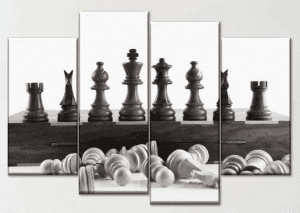Weak Squares are just as important as weak pawns, but are usually less clearly perceived. They mainly affect the following areas:
1.Pawn Mobility
Weak squares reduce the mobility of the pawns, which in turn affects the distribution of space (important for piece activity) and the potential for creating passed pawns.
2.Piece Activity
Weak squares serve as outposts for the opponent’s pieces and therefore increase their efficiency. This is where the concept of the ideal square comes into play. The ideal square for one party’s piece is often a weak square of the other side.
3.King Safety
Both areas are also tangential to king safety. Weak squares in the vicinity of my king allow the opponent’s pieces to approach. They also take away the flexibility of my pawns to actively build barriers (restriction).
In addition to the above topics, the participant of the webinar will learn how to recognize weak squares, how to exploit them, how to provoke them and, of course, how to avoid them himself. The subject is divided into the following categories:
- The backward pawn
- The central outpost
- The outpost on the 6th rank
- Obscure piece maneuvers
- The isolated pawn
- Pawn mobility
- King safety
- Color complexes
- Provocation
- The bishop pair
- Bishop versus knight
- Good versus bad bishop
- The weak point
- The positional sacrifice
Schedule
A course consists of ten 2 hour sessions. There is one session per week. Every session takes place between 7 pm and 9:05 pm CET (5 minute break).
Events: 3 APR 10 APR 17 APR 24 APR 1 MAY 8 MAY 15 MAY 22 MAY 29MAY 5JUN
It is no problem, if you cannot attend every session, as these are going to be recorded.
Maximum group size
The course will be closed after 12 registrations.
Target group
Up to Elo 2250
Handout
cbv/pgn + session video
Fee
EUR 200 per course (= EUR 10 per hour), payment upfront
children and juveniles 25% discount
25% bring-a-friend-bonus for both the bringer and the brought one
Registration
info (at) matthias-wahls (dot) com
